Improving Reliability of Mining and Construction Equipments: A Focused Approach on Lubricant Selection, Application & Regular Maintenance.
Reliability: A most probable duration of time during which, a person, a system, an equipment, or a machine will function consistently without any failure, as per the designed/claimed capacity & capability, if used as per the standard operating procedure in the specified conditions.
Equipment Reliability: Mining and construction equipment reliability here refers to the availability of intended production services without any downtime between two preventive maintenance schedules.
Mining Activity: Mining is one of the very important basic economic activities of our country. It drives all types of manufacturing activity as products received from the mining sector, find extensive uses in the manufacturing industries, chemical industries, construction industries, pharmaceutical industries etc. The activity of mining has, cascading value addition to the other sectors of the economy and hence the countries’ overall GDP, for example, the very basic steel article we touch every day at home “the door handle”, although comes from a handle manufacturer, the steel used, passes through the following factories before it comes to us, adding value to the economy at each stage of the business process. Mining is one of the very important basic economic activities of our country. It drives all types of manufacturing activity as products received from the mining sector, find extensive uses in the manufacturing industries, chemical industries, construction industries, pharmaceutical industries etc. The activity of mining has, cascading value addition to the other sectors of the economy and hence the countries’ overall GDP, for example, the very basic steel article we touch every day at home “the door handle”, although comes from a handle manufacturer, the steel used, passes through the following factories before it comes to us, adding value to the economy at each stage of the business process.
Iron ore in mother nature ore mining iron ore processing sponge iron making iron billet making by continuous casting or rolling steel bar making through alloy additions rolling to desired diameter in a rolling mill forging, machining/finishing to the desired shape of a door handle.
The Mining Sector: The Indian Mining sector consists of a large number of small operational mines (> 2000 no’s). In iron ore/metal ore/aluminium mining, Tata Steel Ltd ranks as no.1 mining company and Hindalco Industries ranks no. 2 in India. As per the volumes of production, India is ranked 4th rank as per the Global Mineral Production Report by the “International Organizing Committee for the World Mining Congress”. All mines in India are controlled by the Ministry of Mines. The role includes surveying, exploring, and mining all types of minerals. The Mining Sector contributes to about 10% of India’s GDP.
Mining Sector Equipment: Loading & Transport Equipment:
|
Loader: Shovel Truck Lubricants required :
|
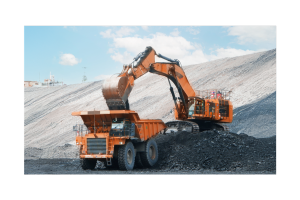
|
|
Conveyer Lubricants required:
|
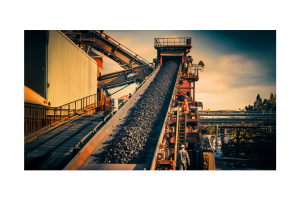
|
|
Excavator Lubricants required:
|
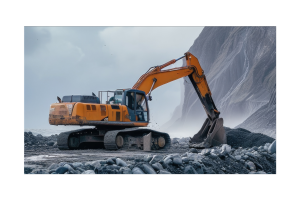
|
|
Dump Truck Lubricants required:
|
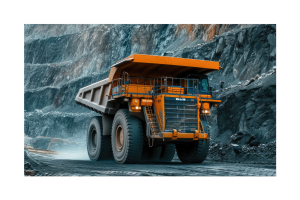
|
|
Bulldozer Lubricants required:
|
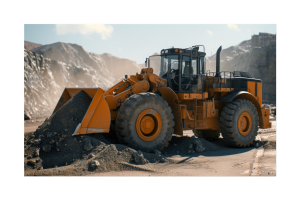
|
|
Drill Lubricants required:
|
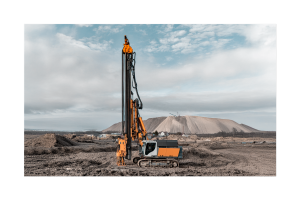
|
|
Crusher
|
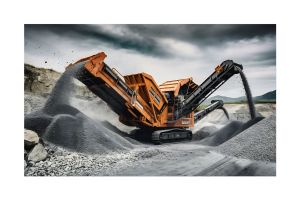
|
Types of Mines :
| Open Pit Mine | Underground Mine |
|---|---|
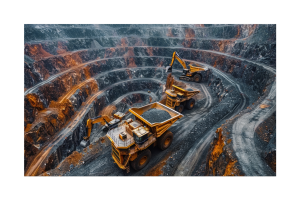
|
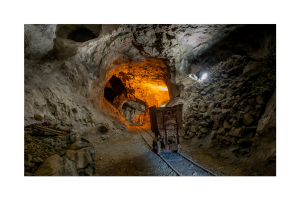
|
Business Challenges: Approximately 20 ~ 40% of the mine’s operating cost is attributed to equipment maintenance cost, hence, equipment reliability is of great importance for the mining sector.
Mining Sector Equipment Reliability: As we know, mining equipment has a higher ownership cost, hence every asset owner is interested in having a good predictable life for their machines and equipment from a use and re-sale point of view. The mining sector needs reliable equipment management.
Parameters Affecting Mining Sector Equipment Reliability: The following factors affect the reliability of mining sector equipment across the world.
Focus Required
1. Uses of “mining environment compatible” lubricants in the loaded, rotating, tribologically active machines
and equipment of the mining sector.
2. Quality and construction materials of the equipment’s critical components.
3. Quality of manpower employed for maintenance, quality, and production work.
4. Routine observation report of each critically loaded or tribo-active component.
5. Weekly inspection of all the equipment and parts facing the load & critical to the temperature,
pressure, and mechanical forces during routine operations. Making minutes of meetings with all the stakeholders
and taking timely corrective actions.
6. Periodic preventive maintenance program by the maintenance team.
7. Health and working conditions of the quality/inspection/production and maintenance manpower working with
the machines.
8. Equipment ownership and the motivation of the manpower.
9. Timely availability of spare parts in good condition for the planned maintenance activity.
Mining Environment: The mining environment in India and many other countries is characterized by the following features:
1. Contaminated atmospheric Air: Full of soot and dust, with considerable moisture in the rainy season,
rainy days, and around the year in coastal areas.
2. Impact on the Equipment Reliability: Corrosive damage to the un-painted/untreated equipment parts
leads to unpredictable structural failures, excessive soot build-up in engine oils, gear oils, transmission
oils, hydraulic oils and bearing greases of the machines and equipment leading to premature drain intervals or
premature re-greasing of the bearings leading to the escalation in maintenance cost.
3. Contaminated Water: Water can mix with oil through condensation or direct exposure, and its pH,
determined by mineral and soil contact, can significantly impact the oil's properties. Acidic or alkaline water
can alter the chemical structure of lubricants, leading to corrosion or unwanted reactions. If the oils and
lubricants have poor dispersion qualities and inadequate demulsibility characteristics, they will struggle to
separate from the water, resulting in reduced lubrication performance and potentially causing machinery wear or
failure.
How to Select: Mining Environment Compatible Lubricants
The Most Common Tribological Conditions: Heavy Loads, Shock Loads, High Temperatures, and Dusty Environments.
Selection Criteria:
1. Operating Condition: First observe the operating conditions, like temperature, humidity, exposure to dust and load capacity to find out the Viscosity and performance characteristics required by the lubricant.
2. Equipment Builder Recommendations in the Equipment Manual: Nowadays, most OEM companies mention the desired lubricants in the equipment manual to ensure minimized maintenance costs during the equipment’s warranty period to avoid any cost escalations.
3. Environmental Impact: Choose environmentally friendly lubricants, which meet regulatory compliance and contribute to the reduced ecological footprint to encourage sustainable mining practices.
4. Maintenance Practice: First estimate the current lubrication practices, application, monitoring and compatibility issues. Applying proper lubricant application techniques, regular monitoring and timely re-lubrication is of great importance. It is always better to choose lubricants that are compatible with the existing lubricant used to avoid the equipment damage risk.
Mining Equipment Engine Oil: Use engine oils conforming to Mack T-8E and ASTM D5967 (July 1, 2021), which is the standard test method for evaluating diesel engine oils' performance in the T-8 diesel engine test. This method assesses characteristics such as viscosity increase and soot concentration. Key considerations include:
1. The viscosity increase at 3.8% soot must remain below the maximum limit of 11.5 cSt.
2. Relative viscosity at 4.8% soot and 50% DIN shear loss must not exceed 2.1 cSt.
3. Relative viscosity at 4.8% soot and 100% DIN shear loss must also not exceed 2.1 cSt.
Mining Equipment Hydraulic Oil: Use special hydraulic oils of AW, HLP, HVI type as per DIN 51524 Part 2 & 3 for the excellent anti-wear properties to ensure the longevity of hydraulic system components. The oil must be capable to withstand the demanding operating conditions of higher thermal stability, high oxidation stability and good demulsibility characteristics.
Mining Equipment Gear Oil: Use special gear oils of CLP, CKD Type as per the DIN 51517 Part 2 & Part 3 for excellent anti-wear and extreme pressure properties to ensure longevity of the gear and bearing system components. The oil must be capable to withstand the demanding operating conditions of shock loading, un-even loading patterns, higher thermal stability, higher soot build-up and higher oxidation stability.
Mining Equipment Grease: Use water-resistant, high-temperature compatible lithium greases with a thicker lubricating film for very good anti-corrosive and sealing properties for long-term reliable performance.
Maintenance of Lubricants:
Some key aspects of lubricant maintenance are mentioned below.
1. Construction Sector Equipment: The construction sector is another very important sector of our nation’s economy and GDP. The equipment used by this Sector includes Excavators, Backhoe, Dragline Excavator, Bulldozers, Graders, Wheel Tractor Scraper, Trenchers, Loaders, Tower Cranes, Pavers, Compactors, Tele-handlers, Feller Bunchers, Dump Trucks, Pile Boring Machine & Pile Driving Machine.
Construction Sector Equipment Reliability: The reliability of construction sector equipment depends upon
the following factors and must be taken care of by the Maintenance Managers.
1. Selection of robust equipment as per the work environment.
2. Regular manual inspection of machines and equipment and adherence to the maintenance schedules.
3. Oil Analysis Program: Regularly testing the lubricating oils during use to know any possible harmful effects
due to any reason.
4. Follow the lubricant change guidelines of the oil supplier and do not delay it.
5. Use automated or manual proven lubrication techniques to do proper lubrication of machines and equipment
without excess or shortage.
Used & Waste Oil Recycling Program :
The engine oil, gear oil, transmission oil, and hydraulic oil lose their utility in Mining and Construction
Equipment due to depletion of additives and changes in the vital properties of the lubricant.
These lubricants can be collected and sold to the re-refiners for the Oil Recycling Program. Recycled Oil will
be tested, characterised, and blended with the desired ingredients before using in the next application.
Nation’s GDP & Equipment Reliability :
The reliability of machines and equipment within a country plays a crucial role in maximizing the profits of
asset owners, which in turn boosts the nation's GDP. High machine reliability leads to greater operational
efficiency, minimizing downtime, and ensuring that production processes run smoothly. This reliability also
enhances a country's ability to compete in the global market by maintaining high productivity and meeting
production schedules without delays.
Routine and preventive maintenance are essential for ensuring the continuous reliability of equipment, as they
help identify and resolve potential issues before they cause breakdowns. By consistently maintaining machinery,
unexpected downtime is minimized, and equipment lifespan is extended. Adopting Total Productive Maintenance
(TPM) practices further enhances equipment performance by involving all employees in preventive and proactive
maintenance efforts, fostering a collaborative environment that supports sustaining productivity and operational
excellence.
About the Author:
Jitendra Singh Started his Professional Career in 1994 after his MSc in Organic Chemistry. He Successfully managed Various Techno-commercial projects on Indigenisation, Multisource development, Innovation, Product development, Process Development, Failure analysis, Market Research, Market development, Strategy development, Value addition to Production, Purchase, Logistics, R&D & QA functions. Team Training, Technical Sales with two Automobile Engineering Companies and many Speciality Chemical Companies. He has been contributing to various Lubricants and Additive Projects since 2006 as a Technical Leader. You can reach Mr Jitendra Singh at sales@finozol.com
Jitendra Singh
Vice President - Technical Sales | Finozol Speciality Chemicals Pvt. Ltd.


